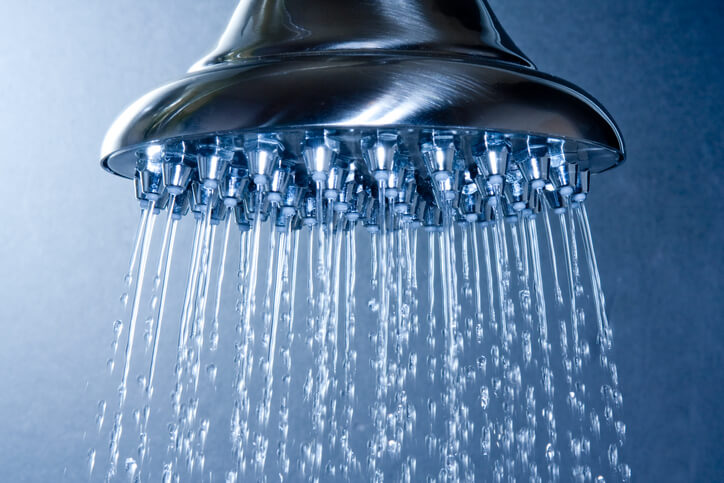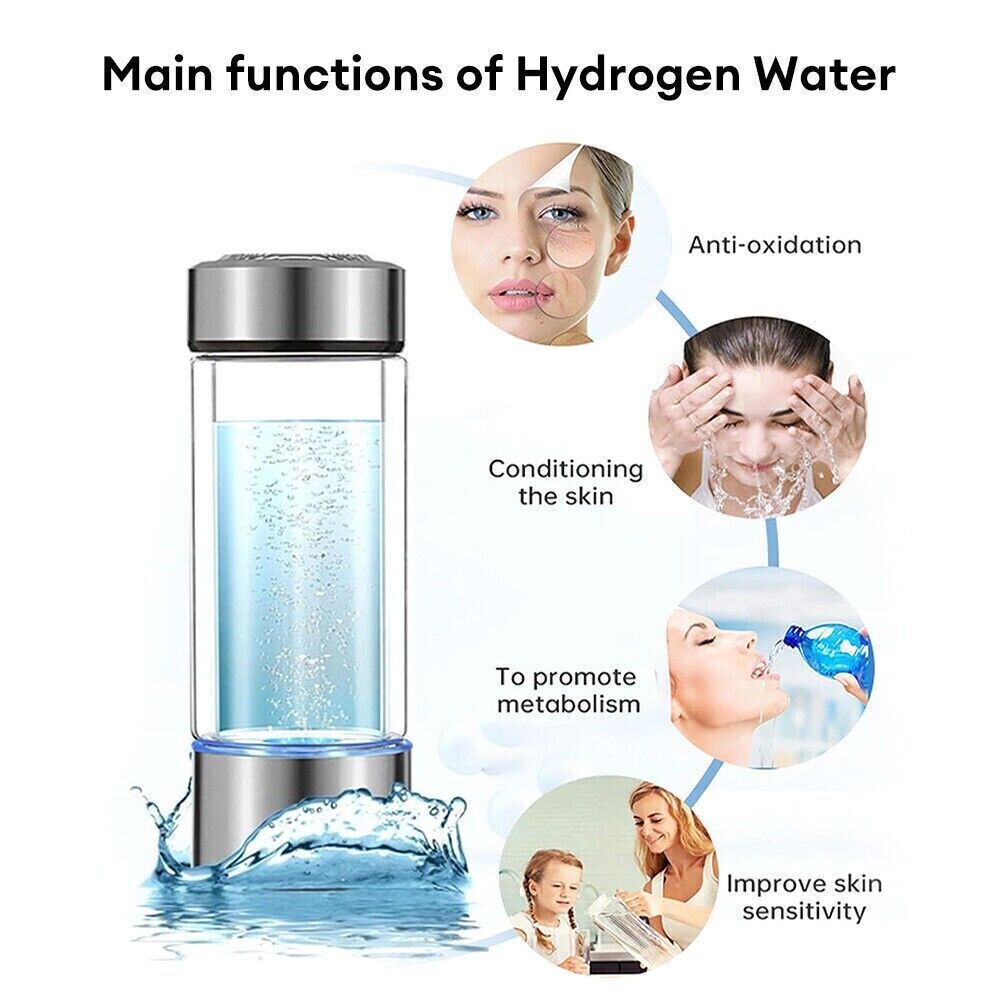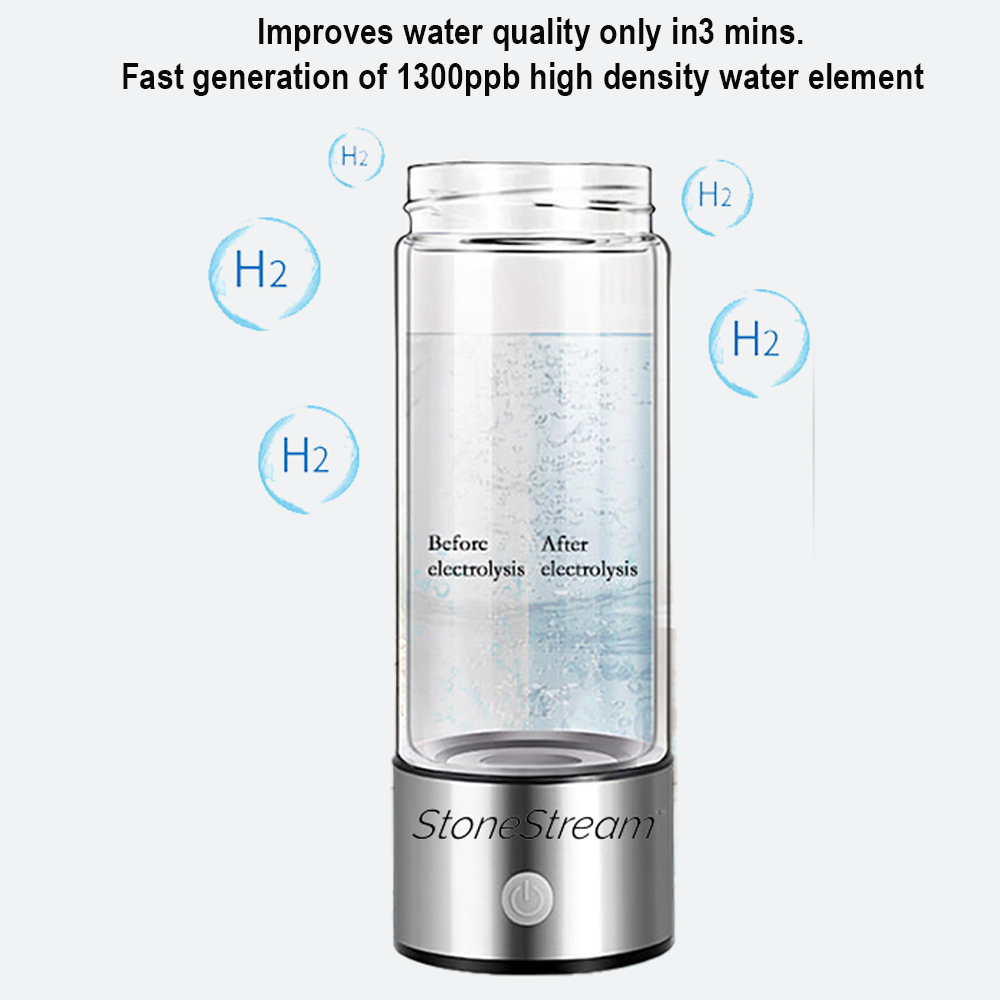Wasser ist eines der wichtigsten Elemente für die Erhaltung des Lebens auf unserem Planeten. Der Zugang zu sauberes, sicheres Trinkwasser ist für unser Wohlbefinden unerlässlich. Eine der wichtigsten Maßnahmen zur Gewährleistung der Sicherheit unserer Wasserversorgung ist die Zugabe von Chlor. Aber warum ist Chlor unserem Wasser zugesetzt Versorgung, wenn es viel bessere Alternativen zur Produktion von klarem und sicherem Wasser gibt? In diesem Blog untersuchen wir die Gründe, warum unserem Wasser Chlor zugesetzt wird und warum es am besten ist, es wieder zu entfernen.
Der Grund für die Zugabe von Chlor zu unserer Wasserversorgung
Okay, sprechen wir das Offensichtliche an: Warum ist Chlor unserem Wasser zugesetzt? Der Grund ist: Desinfektion! Wenn es dem Wasser zugesetzt wird, reagiert es mit organischen und anorganischen Substanzen, einschließlich Mikroorganismen wie Bakterien, Viren und Protozoen. Daher trägt Chlor zum Schutz der öffentlichen Gesundheit bei, indem es durch Wasser übertragene Krankheiten verhindert. Neben der Desinfektion erfüllt Chlor auch die folgenden Aufgaben:
- Nach der Erstbehandlung verbleibt ein Restchlor im Wasser. Dieser Restschutz trägt dazu bei, die Sicherheit des Wassers auf seinem Weg durch das Verteilungssystem zu unseren Häusern aufrechtzuerhalten und eine erneute Verunreinigung zu verhindern.
- Chlor ist wirksam bei der Kontrolle des Algenwachstums und der Reduzierung des Gehalts an organischen Stoffen in Wasserquellen. Dies ist entscheidend, um die Bildung schädlicher Nebenprodukte während des Aufbereitungsprozesses zu verhindern.
- Chlorierung ist eine kostengünstige Methode zur Wasseraufbereitung im großen Maßstab. Sie ist leicht verfügbar und kann problemlos auf verschiedene Wasserquellen angewendet werden.
Schauen Sie sich das an Artikel um mehr über den Chlorierungsprozess zu erfahren!
Warum es am besten ist, Chlor aus dem Wasser zu entfernen
Nachdem wir nun wissen, warum man dem Wasser Chlor zufügen sollte, wollen wir uns ansehen, warum es besser ist, Chlor aus dem Wasser zu entfernen:
Unerwünschter Geschmack und Geruch:
Chlor kann dem Wasser einen ausgeprägten Geschmack und Geruch verleihen. Viele Menschen empfinden den Geschmack und Geruch als unangenehm, was sie davon abhalten kann, ausreichend Wasser zu trinken. Stellen Sie sich also das nächste Mal, wenn Sie das Gefühl haben, Chlorwasser zu trinken, seinen Geschmack vor. (Bitte trinken Sie es nicht)
Gesundheitliche Bedenken:
Chlor kann mit organischen Verbindungen im Wasser reagieren und schädliche Nebenprodukte bilden, wie zum Beispiel Trihalogenmethane (THMs) und Halogenessigsäuren (HAAs). Längerer Kontakt mit hohen Konzentrationen dieser Nebenprodukte kann gesundheitliche Risiken bergen, darunter ein erhöhtes Krebsrisiko.
Haut- und Haarreizungen:
Niemand möchte, dass sein kostbares Haar und seine Haut durch eine schädliche Chemikalie beeinträchtigt werden! Chlor im Wasser kann bei manchen Menschen zu Haut- und Haarproblemen führen, insbesondere bei Personen mit empfindlicher Haut oder bestehenden Hauterkrankungen. Daher ist es am besten, Chlor herauszufiltern, um Ihre geliebte Haut und Ihr Haar zu pflegen!
Umweltauswirkungen:
Wenn mit Chlor behandeltes Wasser in natürliche Gewässer eingeleitet wird, kann es negative Auswirkungen auf das Leben und die Ökosysteme im Wasser haben. Chlor kann für Fische und andere Wasserorganismen giftig sein. Indem wir Chlor vor der Einleitung entfernen, können wir seine Auswirkungen auf die Umwelt verringern und zum Schutz der aquatischen Ökosysteme beitragen.
Aufgrund all dieser Bedenken können wir mit Sicherheit bestätigen, dass Chlor tatsächlich ein Feind ist, gegen den es sich zu kämpfen lohnt.Auch wenn es sich als Held bei der Keimentfernung tarnt, zeigt sich die wahre Wirkung, wenn Sie mehr Haare verlieren als beim Duschen. Durch den Einsatz wirksamer Methoden zur Chlorentfernung können wir ein Gleichgewicht zwischen den Vorteilen der Desinfektion und dem Wunsch nach sauberem, wohlschmeckendem und umweltfreundlichem Wasser herstellen.
Befürchten Sie Chlor in Ihrer Dusche? Dann kämpfen Sie nicht allein, denn Stonestream ist hier, um Ihnen zu helfen. Treffen Sie Ihren freundlichen Kriegshelden im Duschkrieg, der EcoPower Duschkopf! Dieser Duschkopf entfernt dank seines Mineralperlen-Filtersystems und seines ergonomischen Designs garantiert Chlor aus Ihrem kostbaren Duschwasser. Bestellen Sie einen Jetzt und bleiben Sie frei von allen Chlor-bedingten Dramen.
Original Ecopower Duschkopf

Jetzt kaufen
FAQs
- Warum wird unserem Trinkwasser Chlor zugesetzt?
Antwort: Chlor wird unserer Wasserversorgung als wichtige Desinfektionsmaßnahme zugesetzt. Es tötet wirksam schädliche Mikroorganismen wie Bakterien, Viren und Protozoen ab und verringert so das Risiko von durch Wasser übertragenen Krankheiten.
- Ist es unbedenklich, Wasser mit Chlor zu trinken?
Antwort: Ja, Wasser mit Chlor ist im Allgemeinen trinkbar. Die zur Desinfektion verwendeten Chlorwerte werden sorgfältig reguliert, um sicherzustellen, dass sie keine unmittelbaren Gesundheitsrisiken darstellen. Manche Personen können den Geschmack und Geruch jedoch als unangenehm empfinden. - Kann Chlor im Wasser langfristige Auswirkungen auf die Gesundheit haben?
Antwort: Längerer Kontakt mit hohen Konzentrationen von Chlornebenprodukten wie Trihalogenmethanen (THM) und Haloessigsäuren (HAA) kann langfristige Gesundheitsrisiken bergen, darunter ein erhöhtes Risiko für bestimmte Krebsarten. Aus diesem Grund wird empfohlen, Chlor aus dem Wasser zu entfernen, wenn es langfristig verzehrt wird.
-
Wie kann ich zu Hause Chlor aus meinem Leitungswasser entfernen?
Antwort: Es gibt mehrere wirksame Methoden, um Chlor aus Leitungswasser zu entfernen. Dazu gehören die Verwendung von Aktivkohlefiltern, das Abkochen und Abkühlen von Wasser, die Verwendung von Entchlorungstabletten oder -chemikalien oder das Stehenlassen des Wassers in einem offenen Behälter für einige Stunden. - Gibt es Vorteile für die Umwelt, wenn man Chlor aus dem Wasser entfernt?
Antwort: Ja, die Entfernung von Chlor aus dem Wasser vor der Einleitung kann positive Auswirkungen auf die Umwelt haben. Chlor kann für das Leben im Wasser schädlich sein und sein Vorkommen in natürlichen Gewässern kann Ökosysteme stören. Durch die Entfernung von Chlor können wir dazu beitragen, die aquatische Umwelt zu schützen und gesunde Ökosysteme zu erhalten.



